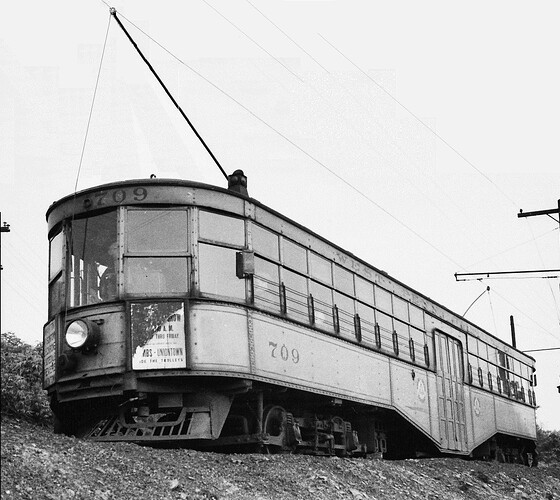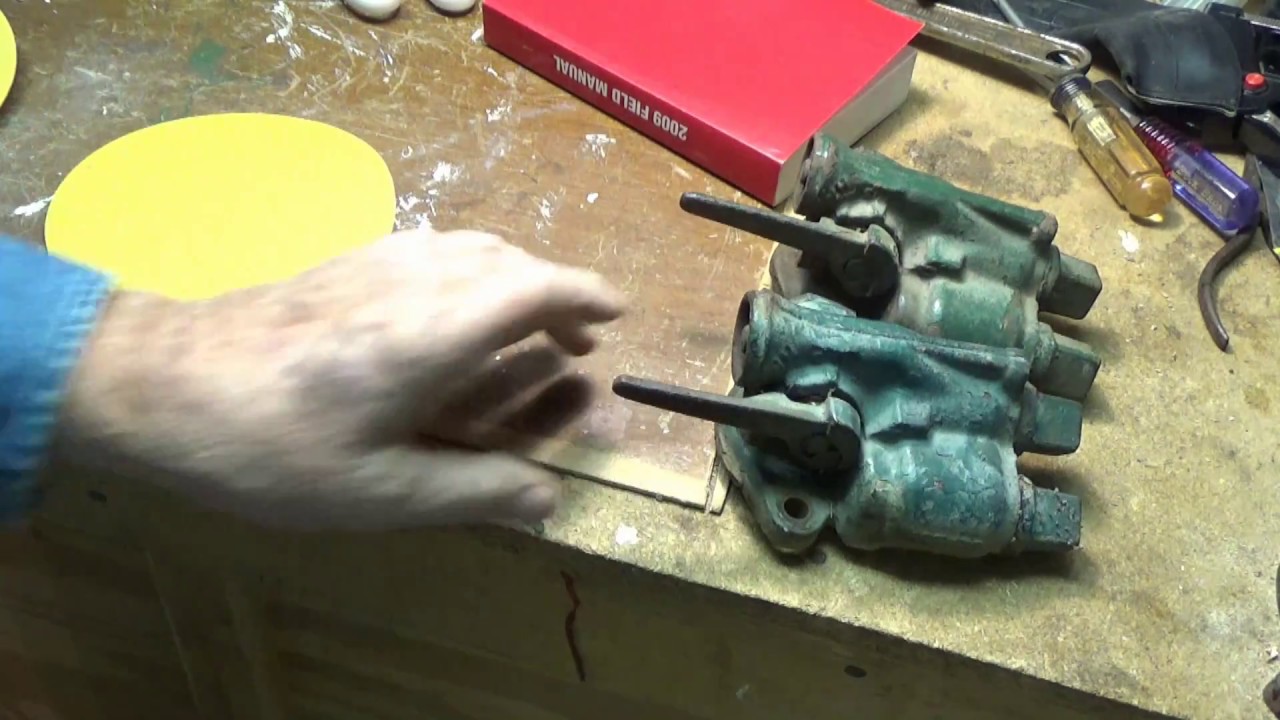There’s the same thing with driving an OTR truck. People assume they’re easy to drive. Nope there’s a feeling that you get in the seat that tells you whenever the old Merde is about to slam in the fans. You learn to listen to how your engine sounds the transmission feels the noise of the tires. In bad weather conditions if you’re throwing spray off your tires. You watch your mirror mounts and see if they’re building ice. Ypu forget to pay attention and someone might not make it home.
I was reading a NTSB report of a CSX coal train runaway on the Mountain Sub between Grafton and Cumberland. The ‘cause’ was the engineer only had Dynamics operating on the lead engine of three when ‘he thought’ he had all three working. Among the testing that the NTSB did was to test the holding power of air brakes, with the train consisting of 100 ton loaded cars at 286K per car - on a 2% grade if a train of such cars exceeded 15 MPH the air brakes would fade to ineffectiveness and a runaway would ensue. On the wrecking train the Engineer didn’t become concerned about his ability to control the train until he could not get it slower than 18 MPH at a specific point on the descent. At 18 MPH the train was already lost. The train was in the 60’s MPH when if finally derailed.
Heavier loads require more braking power than lighter loads - be that cars, trucks, or trains. Ocean going vessels don’t have brakes in the conventional meaning of the word.
Scary that there was no indication in the cab that they only had 1/3 dynamic (unless they did but overlooked it). Are there gauges or something to tell the engineer?
Scary too that they didn’t realize it wasn’t braking like it should and waited too long to use the air.
Not sure of the year of the incident Balt cited, but with older locomotives, the gages only tell the engineer what is happening in the unit he is running. Besides feeling the braking force, one can tell if the dynamics are working in the lead unit by looking at the amp meter. Trailing units will send alarm signals to the lead unit to indicate certain problems (ground fault relay, engine shutdown, etc.), but only if that trailing unit is online. I’m not sure if the alarm would trip if a dynamic brake failure was detected, or if there is even a way to detect that remotely.
Modern engines equipped for DPU have displays that show what is happening in the remote units, so you can see if they are generating braking amperage or not, and thus the engineer will have some knowledge of what is happening there. I’m sure Jeff or Zug will have some good information to add.
The whole story goes a little deeper. Engineer had been medically restricted to yard service for several years and the restriction had been recently lifted, and thus it had been some time since he had operated the territory.
Dynamics are trainlined through the 27 pin MU cable between units. It was found that the MU cable between the lead and second units had a broken wire in the pin position that controls dynamic braking. The effort being applied in dynamics is shown on the load meter of the lead engine. The engineer was getting the load meter readings he expected to get, but was not getting the train control he expected to get. His real mistake was continuing the trip when he got to higher speeds on the ‘minor’ grades than desired and when air brakes and the existing level of dynamics would bring the train to a stop.
This event in concert with some others around the country caused the FRA to develop the rules about Crew being Qualified over the territories they operate. I believe Engineers have to operate over a territory at least once every six months to remain Qualified. For Conductors it is once in a calendar year.
This incident happened before the wide spread use of AC traction engines and about 20 years before CSX started implementing DPU operation.
Thanks Balt.
I’m pretty sure I’ve read the same report - one reason why the NTSB got involved was that a derailed car hit house and killed someone in the house. The note about brakes fading above 15mph when descending a 2% grade made quite an impression on me.
This incident had quite a bit in common with the SP trona train runaway on the Cajon Pass, i.e. engineer not aware of non-functioning dynamic brakes. FWIW, there was at least one runaway on the Milwaukee electrified line where the cause was the engineer didn’t get train speed under control before engaging regenerative braking.
The lead engine gauges or computer screen show only what the lead engine is doing. Many of the newer engines have a consist monitor that shows what the trailing engines (if equipped with monitor capability) are doing. Most just show the totals of the entire consist, not what individual trailing units are doing. There have been some that did show individual engines, up to 2 trailing units. I haven’t seen that kind for awhile on our engines.
Distibuted Power screens only show what the lead-linked unit in the DP consists is doing. Some are now equipped to show the total output of a dp consist.
Alarm bells are supposed to ring when things quit working or develop problems. That doesn’t always happen. I’ve had a trailing engine shut down without ringing the bell.
Jeff
Murphy was a railroader!
In answer to Balt’s question, on air-less all-electric operation: With few exceptions (Boston’s “Picture Windows” the only exception I;m certain about), post-WWII PCC streetcars were and are (with the Brookfield Engineering modernization and overhaul kits) all-electric, with only dynasmic braking and a final stop and parking mechanical brake. I believe this is true of most modern LRVx, which, like modern diesels, have computer-controlled AC motors, But this nlthing new, really. West Penn interurban cars had regenative braking, without air-btrakes, and the final stop and parking required use of the hand-brake. 1912! Like PCCs and some modern ,light rfail cars, they also had magnetic track-brakes (horizontal shoe contacting the rail directly) for emergency stops.
Indeed. This is how/why the CTA went all electric.
Right after WW2 the CTA took over the ailing streetcar lines and bought something like 700 new PCC streetcars. Just as an auto boom rendered them obsolete.
So they “scrapped” the cars and stockpiled everything and use the parts to build rapid transit cars. Including the PCC type brakes. Those were the famous 6000 series cars seen in the opening credits of the Bob Newhart show.
They were previously all air brake like all other rapid transit systems. They must have liked the electric brakes because all CTA trains since are all electric.
New York City stayed with blended dynamic-and-air. This does have one advantage. The low-polutionn (Catalytic muffler) diesels, regularly used for work-trains when power must be shut-off, can be used as rescue motive power in an emegency and control the air-brakes on the MU passenger equipment.
In steam days, helper locomotives were disconnected at the summit and either returned to their origin, or if they were to continue in the same direction down the other side, they would disconnect and run separately ahead of the train since they could run faster. In diesel days after they realized the value of dynamic brakes, would the still send the helpers back to their base, or would they keep the helpers on the train down the other side to assist in dynamic braking?
On B&O in the transition years helpers for freight were normally attached to the rear of the train. Passenger trains would get a head end helper - which from pictorial evidence could be either steam or diesel.
Freight train helpers were always detached on the fly with the Conductor or Flagman pulling the pin and closing the air hose on the rear of the caboose. When the train parts the helper engines experience an emergency application that the engineer will bail off an handle the engines with the independent.
Passenger trains would stop to separated the head end helper, IF, the helper had coupled into the trainline as it was difficult to access the anglecocks for close off the trainline prior to separating from the train. Passenger trains required helpers primarily because their minimum continuous speeds were in the mid 20 MPH range - a speed that trains had trouble getting up to in the mountains.
In the operation of manned helpers in the 21st Century (before the implementation of DPU operation) it was a common occurrence for trains to request the operation of the helpers DOWN the grade for the additional dynamic braking power the helpers have.
Didn’t some steam railroads also use helpers downhill to assist with braking? Used the reverser somehow? Or just used the brakes on the loco?
Note I’m referring to early days 1800s before wide adoption of automatic air brakes.
They wouldn’t have done that long with tallow lubrication!
The closest I think you’d get would be if a road like D&RGW used the le Chatelier “water brake” on a helper consist as well as the road engine(s). That particular railroad kept the system on some surprisingly late power, and may have arranged the valve gear to optimize performance.
Funny you mention the D&RGW because that is the operation I was thinking of based on a photo of a train on the narrow gauge Cumbres line in the later years. However, it may have been a unique situation. The eastbound train used helpers to climb the 4% grade up the the Cumbres summit, but the trip down the other side IIRC is in the 1.5% grade so perhaps there was not much need for extra engines for braking, as the photo showed one of the single locos, and the caption said the helpers ran singly down the grade as they could do it faster.
Remember - steam engines have tires fitted to their drivers. The tires are shrink fitted to the drivers by heating them to expand to a diameter just bigger than the room temperature driver. Heat is applied to the tire to expand it. Once it has reached the proper temperature and inside circumference it is fitted to the driver - as the tire cools, it shrinks, if not being affixed to the driver it would shrink to a interior circumference smaller than the exterior circumference of the driver.
If brakes are applied to the driver wheels, the braking action will put heat into the driver tires. I
Not only steam engines – high-speed testing GG1s with Amfleet consists in the 1970s produced driver-tire problems in rather short order…
He is almost certainly not saying that the helpers would use their independent to provide extra friction braking – not only for the reason you mention, but because that would pose an increased risk of skidding if combined with reverse steam or ‘water’ braking. This is not dissimilar to concerns with using an air-brake ‘set’ on a diesel-electric in dynamic if the engine is not set up for blended braking.
One aspect of air braking we tend to overlook is Retainers. In the 20th Century with steam power in graded territories TTSI would require some percent of the train - starting from the engine to have the Retainer valve used -
Remember it requires a man to do the positioning of the retainers - safety would expect the train to be stopped if retainers are being turned up or turned down - some crews did not have safety in their vocabulary.

